3-Nitrobenzoic acid
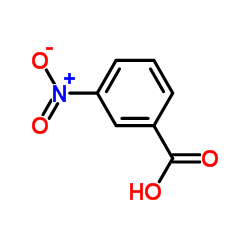
3-Nitrobenzoic acid structure
|
Common Name | 3-Nitrobenzoic acid | ||
|---|---|---|---|---|
| CAS Number | 121-92-6 | Molecular Weight | 167.119 | |
| Density | 1.5±0.1 g/cm3 | Boiling Point | 340.7±25.0 °C at 760 mmHg | |
| Molecular Formula | C7H5NO4 | Melting Point | 139-141 °C(lit.) | |
| MSDS | Chinese USA | Flash Point | 157.5±11.6 °C | |
| Symbol |

GHS07 |
Signal Word | Warning | |
| Name | 3-Nitrobenzoic acid |
|---|---|
| Synonym | More Synonyms |
| Density | 1.5±0.1 g/cm3 |
|---|---|
| Boiling Point | 340.7±25.0 °C at 760 mmHg |
| Melting Point | 139-141 °C(lit.) |
| Molecular Formula | C7H5NO4 |
| Molecular Weight | 167.119 |
| Flash Point | 157.5±11.6 °C |
| Exact Mass | 167.021851 |
| PSA | 83.12000 |
| LogP | 1.82 |
| Vapour Pressure | 0.0±0.8 mmHg at 25°C |
| Index of Refraction | 1.615 |
| InChIKey | AFPHTEQTJZKQAQ-UHFFFAOYSA-N |
| SMILES | O=C(O)c1cccc([N+](=O)[O-])c1 |
| Stability | Stable. Combustible. Incompatible with strong oxidizing agents. |
| Water Solubility | <0.01 g/100 mL at 18 ºC |
CHEMICAL IDENTIFICATION
HEALTH HAZARD DATAACUTE TOXICITY DATA
MUTATION DATA
|
| Symbol |

GHS07 |
|---|---|
| Signal Word | Warning |
| Hazard Statements | H302-H315-H319-H335-H412 |
| Precautionary Statements | P261-P273-P305 + P351 + P338 |
| Personal Protective Equipment | dust mask type N95 (US);Eyeshields;Gloves |
| Hazard Codes | Xn:Harmful |
| Risk Phrases | R33 |
| Safety Phrases | S26-S24/25 |
| RIDADR | NONH for all modes of transport |
| WGK Germany | 3 |
| RTECS | DH5000000 |
| HS Code | 2916399090 |
| Precursor 10 | |
|---|---|
| DownStream 10 | |
| HS Code | 2916399090 |
|---|---|
| Summary | 2916399090 other aromatic monocarboxylic acids, their anhydrides, halides, peroxides, peroxyacids and their derivatives VAT:17.0% Tax rebate rate:9.0% Supervision conditions:none MFN tariff:6.5% General tariff:30.0% |
|
Novel capsaicin analogues as potential anticancer agents: synthesis, biological evaluation, and in silico approach.
Arch. Pharm. (Weinheim) 347(12) , 885-95, (2014) A novel class of benzo[d][1,3]dioxol-5-ylmethyl alkyl/aryl amide and ester analogues of capsaicin were designed, synthesized, and evaluated for their cytotoxic activity against human and murine cancer... |
|
|
[Evaluation of the hepatotoxic activity of several chlor-nitro derivatives of benzoic acid].
Vopr. Med. Khim. 29(6) , 113-7, (1983) Hepatotoxic effects of 4-chloro-3-nitrobenzoic acid (x-NBA), 3-nitrobenzoic acid (NBA) and 4-chlorobenzoic acid (CBA) were studied at the doses corresponding to LD50, 1/10 LD50 and 1/50 LD50. The toxi... |
|
|
CdSe quantum dots capped PAMAM dendrimer nanocomposites for sensing nitroaromatic compounds.
Talanta 83(5) , 1335-40, (2011) The detection of nitroaromatic compounds, best known as raw materials in explosives preparations, is important in many fields including environmental science, public security and forensics. CdSe quant... |
| Benzoic acid,m-nitro |
| m-Nitrobenzoic acid |
| EINECS 204-508-5 |
| MFCD00007251 |
| m-Nitrobenzenecarboxylic acid |
| Metanitrobenzoic acid |
| 3-Nitro-benzoic acid |
| Benzoic acid,3-nitro |
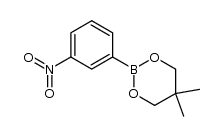 CAS#:585524-79-4
CAS#:585524-79-4 CAS#:124-38-9
CAS#:124-38-9 CAS#:99-61-6
CAS#:99-61-6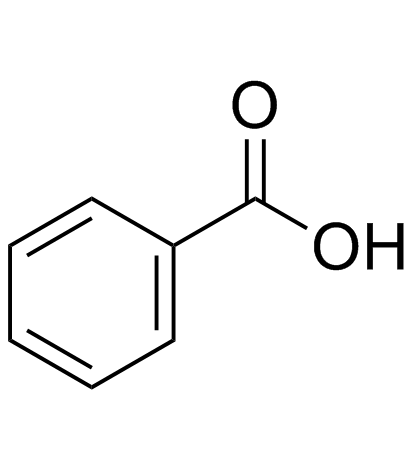 CAS#:65-85-0
CAS#:65-85-0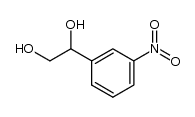 CAS#:101999-47-7
CAS#:101999-47-7 CAS#:99-08-1
CAS#:99-08-1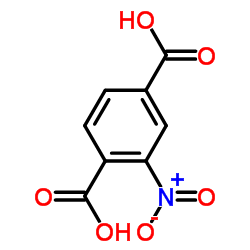 CAS#:610-29-7
CAS#:610-29-7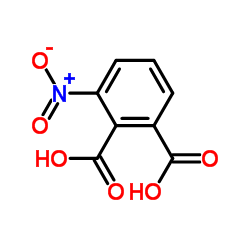 CAS#:603-11-2
CAS#:603-11-2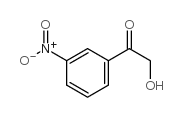 CAS#:72802-41-6
CAS#:72802-41-6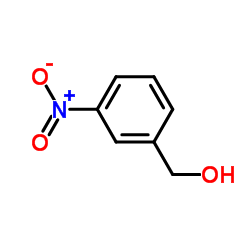 CAS#:619-25-0
CAS#:619-25-0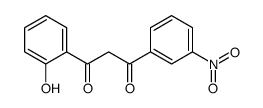 CAS#:109899-85-6
CAS#:109899-85-6 CAS#:109899-88-9
CAS#:109899-88-9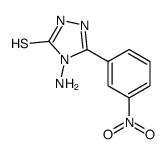 CAS#:105686-75-7
CAS#:105686-75-7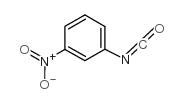 CAS#:3320-87-4
CAS#:3320-87-4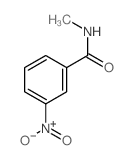 CAS#:3400-26-8
CAS#:3400-26-8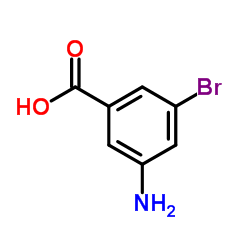 CAS#:42237-85-4
CAS#:42237-85-4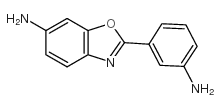 CAS#:313502-13-5
CAS#:313502-13-5 CAS#:50765-19-0
CAS#:50765-19-0![(3N-[(2S,3S)-2-AMINO-3-METHYL-PENTANOYL]-1,3-THIAZOLIDINE)HEMIFUMARATE structure](https://image.chemsrc.com/caspic/417/341529-34-8.png) CAS#:341529-34-8
CAS#:341529-34-8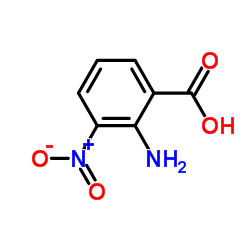 CAS#:606-18-8
CAS#:606-18-8
